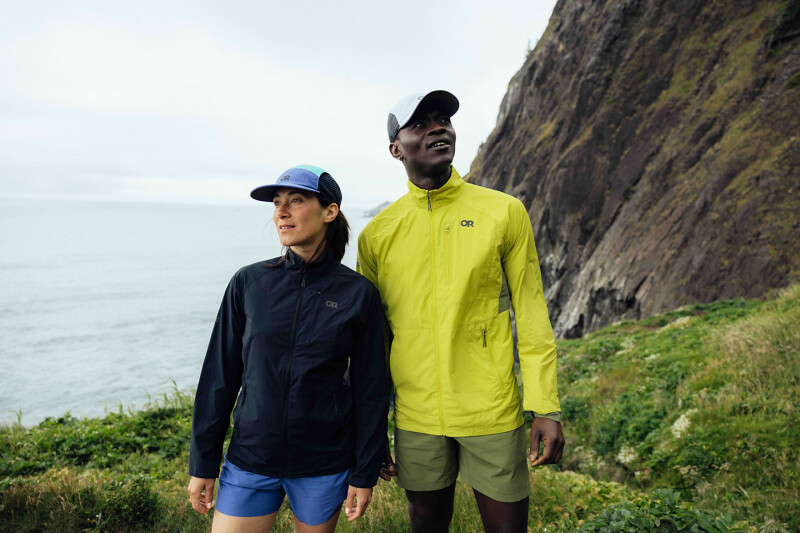RunSignup usually releases an annual RaceTrends Report each winter to provide a thorough assessment of the state of the endurance and fundraising events industry. This year, as the industry adapts to a post-pandemic world, the organization pulled a reduced round of mid-year data to help event organizers better understand the current state of the industry.
The data used for this report includes internal RunSignup data from January through July, 2022. The numbers represent 4,387,409 participants registered in the first half of 2022 and 6,759,602 participants from 2021.
RunSignup estimates that this data represents at least 25-30 percent of the endurance market in 2019; while the market is less stable today, it believes that has increased to more than 35 percent market share.
Among the findings and key takeaways of the RunSignup report:
1. Slow Regrowth
One of the key ways RunSignup looks at the strength of the market is by comparing the number of participants in races that have been on its platform for two years. This removes any impact of increased market share on the platform or new races in the market, looking only at how participation numbers for races have grown (or not).
Looking only at 2021, the news is encouraging — races are continuing to re-grow after the lows of 2020. However, when the lens is pulled back all the way to 2019, the picture is a lot less rosy, with lagging participation each month.
When looking at the 2019 to 2022 comparison by the size of the race (in 2019), races above 500 participants shared in the drop relatively evenly. Interestingly, the very smallest events fared the best, actually showing notable growth.
Key Takeaways
1. Race participation is lagging behind 2019 numbers. Adjust your budget for a smaller race size to ensure viability.
2. While there’s obviously a lot more room for 50-person events to grow, it is also possible that the personal touch and community-focused nature of small events is making it easier for small events to re-integrate into participant’s lives. Look for ways to engage community partners and local nonprofits.
2. Disappearing Events
RunSignup manually tracks every race over 500 participants to see how many of them return on its platform, how many leave for another platform and how many events cease to exist at all. In 2019, just 5.9 percent of all races from 2018 did not recur (on its platform or any other). In 2022, still comparing churn to 2019 because there was so much volatility in events in 2020 and 2021, it found that while competitor churn remains low, a significant number of 2019 events have disappeared from the 2022 schedule altogether.
Key Takeaway
1. With many races from 2019 likely gone forever, some room is created in event schedules for event directors with creative race concepts to test out new ideas and expand their race operations.
3. Prices are Rising
RunSignup first heard rumblings about rising prices in 2021 as supply chain issues and municipal price increases started to kick in, but with virtual events and challenges (and their lower overhead) continuing to make up 20 percent of all events in 2021, average prices remained artificially low. Now, with virtual events down to just eight percent of all events and inflation impacting prices across the country, there is a noticeable jump in event prices compared to pre-pandemic.
Key Takeaways
1. Prices are up across events. Be transparent and honest with your participants about rising costs — they’re likely seeing the same thing at other events as well.
2. Don’t be afraid to try new pricing strategies. Yes, a price increase is a great call-to-action, but a $5 savings may not resonate today as much as it once did. Instead, consider block pricing (increasing by the quantity sold), a flat pricing with discounts for all local running clubs or focusing on group or age incentives.
3. For some events, cutting what you offer (like that T-shirt you hate designing) and moving to an add-on purchase model for swag may provide an alternative to raising prices.
4. Young Runners are Absent
The alarm about a dropping number of participants under 30 began to be raised back in 2016 or 2017 and the pandemic has only accelerated the trend, with just 13.7 percent of all 2022 participants between 18-29.
Key Takeaways:
1. Younger athletes weren’t excited about virtual events, but there’s also clearly a lack of enthusiasm for traditional endurance events. Surveys indicate that Gen Z and young Millennials are inspired by working for a cause (collaborate with a great nonprofit) and social experiences (create fun team opportunities!).
2. Explore (or enlist help with) marketing strategies built for younger people. These include more video content for Instagram, TikTok, and YouTube and capitalizing on micro-celebrities within your local running scene.
5. Marketing Trends are Normalizing
There is one area where the 2022 reports look consistent with pre-pandemic numbers: marketing tools.
Referral Rewards made up seven percent of all registration dollars (when enabled) in 2022. After spiking to 17 percent during the 2020 virtual craze, this represents a return pre-pandemic rates.
• Teams continue to draw 30 percent of participants when they are offered, demonstrating the sustained power of social running.
• The average discount for a coupon code was $13.07, similar to the $13.88 seen in 2019. One positive here: the ROI on coupons actually increased from 294 percent in 2019 to 337 percent in 2022.
Key Takeaways:
1. Despite changing trends, the same marketing tools you’ve been using for years remain consistently effective. Continue to employ word-of-mouth marketing and simple calls to action.
Finding Opportunity
Looking at trends right now can feel a little bleak — participation per event is down, youth participation is stalled, race churn is up and unpredictability in costs and registration patterns are making it harder than ever to prepare for an event. But RunSignup provides a reason for hope and enthusiasm.
These numbers are aggregates and it’s true that many beloved events are struggling, but there are others that are actually seeing growth. RunSignup believes it will take some time for patterns to settle, but there are things event managers can do to try to jumpstart their current events — or even create new events. There is opportunity here to get creative, just as events did in 2020, and try bold new things. Among ideas presented at a recent RunSignup Symposium:
• Re-engage your community by connecting with running clubs, stores, community centers, schools and nonprofits. A lot of the groundwork you did when you first started your event needs to be re-started. Creative pricing options can help you bring some of these groups back into the fold.
• Implement creative Loyalty Programs to coax your previous fans back to the event.
• Think outside the box with referral rewards, including easy-to-manage ideas such as digital gift cards or VIP parking to limit shipping hassles.
• Seek out micro-influencers in your community (think: a few thousand followers who are known in your local running community) to become low-cost ambassadors for your event and track registrations from their individualized link.
• Build a digital strategy that activates people through video content. A little investment in video can go a long way with repurposing on social media, advertising and your race website.
• Try something new. With all the race churn, there’s bound to be a free weekend on your town’s schedule. Take a leap and try something completely new, whether it’s no swag, ALL THE SWAG, a family relay or Tuesday night series.
For more: https://runsignup.com/trends






